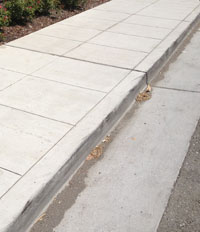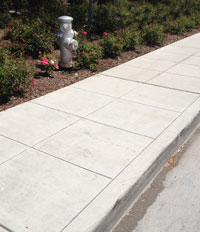 Lunch at Justia is a time reserved for scholarly legal debate. Our focus recently turned to the legality of parking a vehicle along an unmarked curb outside a local Chipotle. On a day when we thought the God of Parking was gracing us with his magnificence, any semblance of karma was purely illusory.
Lunch at Justia is a time reserved for scholarly legal debate. Our focus recently turned to the legality of parking a vehicle along an unmarked curb outside a local Chipotle. On a day when we thought the God of Parking was gracing us with his magnificence, any semblance of karma was purely illusory.
First, we pulled adjacent to the curb. From California Vehicle Code § 21458, we know the meaning of the following curb colors:
(1) Red indicates no stopping, standing, or parking, whether the vehicle is attended or unattended, except that a bus may stop in a red zone marked or signposted as a bus loading zone.
(2) Yellow indicates stopping only for the purpose of loading or unloading passengers or freight for the time as may be specified by local ordinance.
(3) White indicates stopping for either of the following purposes:
(A) Loading or unloading of passengers for the time as may be specified by local ordinance.
(B) Depositing mail in an adjacent mailbox.
(4) Green indicates time limit parking specified by local ordinance.
(5) Blue indicates parking limited exclusively to the vehicles of disabled persons and disabled veterans.
So, since the curb was not red, we were in the clear, right?
Unfortunately not. A closer reading of Section 21458 indicates that these curb colors are mandated “[w]henever local authorities enact local parking regulations and indicate them by the use of paint upon curbs.” In other words, a person may not park at an unmarked curb if a state law forbids parking at that location, such as when a fire hydrant is present.
 In our situation, a fire hydrant painted in stealth silver was next to the curb. Now, what’s the difference between a hydrant next to an unmarked curb and one next to a red curb? Fortunately, California Vehicle Code § 22514 answers that question.
In our situation, a fire hydrant painted in stealth silver was next to the curb. Now, what’s the difference between a hydrant next to an unmarked curb and one next to a red curb? Fortunately, California Vehicle Code § 22514 answers that question.
In general, the law prohibits persons from stopping or parking within 15 feet of a fire hydrant. However, if local authorities reduce that distance to less than 10 feet in total length, “the distance shall be indicated by signs or markings.”
But, Section 22514(a) does provide an exception if “the vehicle is attended by a licensed driver who is seated in the front seat and who can immediately move such vehicle in case of necessity.” I’m guessing that the driver would not have preferred to exercise that loophole while everyone was eating, regardless of how great a parking spot it was.
